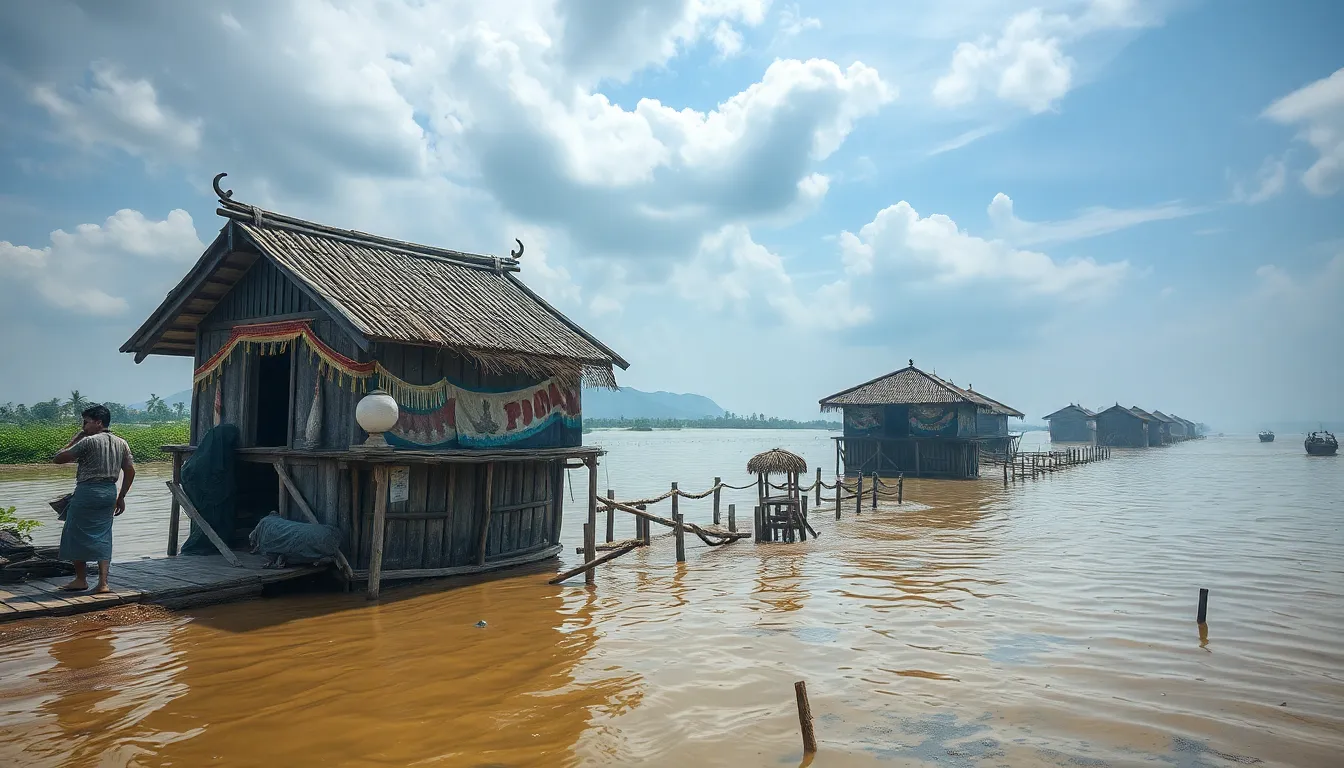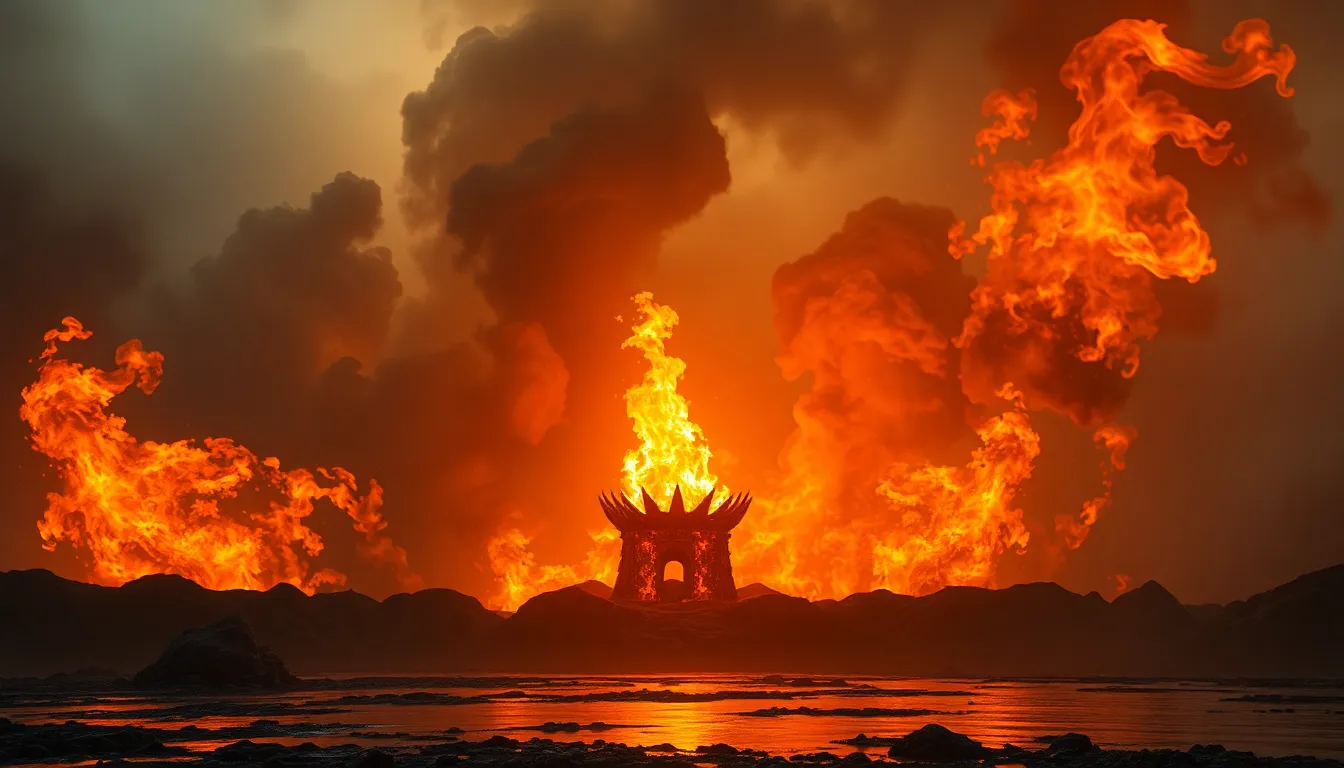Born from Fire and Ice: The Most Dramatic Creation Myths
Introduction: The Allure of Creation Myths
Creation myths serve as the foundation of cultural identity, offering insight into the values and beliefs of societies across the globe. From ancient civilizations to modern narratives, these stories reflect humanity’s quest to understand its origins and the forces that shape existence. Among the myriad of elements depicted in these tales, fire and ice stand out as powerful symbols of creation, destruction, and transformation.
Fire represents warmth, energy, and life, while ice embodies cold, stillness, and potentiality. The interplay between these elemental forces creates dramatic narratives that not only captivate but also provide a deeper understanding of the universe. This article explores the rich tapestry of creation myths that feature these two contrasting elements, revealing their significance across various cultures.
The Duality of Elements: Fire and Ice in Mythology
Throughout mythology, fire and ice symbolize opposing yet complementary forces. Their duality often illustrates the balance required for creation and existence.
Symbolism of Fire in Creation Myths
- Life and Energy: Fire is frequently associated with the spark of life, representing creativity and vitality.
- Destruction: While fire can create, it can also annihilate, symbolizing the destructive side of nature.
- Transformation: Fire transforms materials, signifying rebirth and renewal.
Symbolism of Ice in Creation Myths
- Stillness and Dormancy: Ice often represents a state of potential, where life is paused, waiting for the right conditions to flourish.
- Purity and Clarity: Ice is seen as a cleansing force, offering clarity and a fresh start.
- Desolation: The cold can symbolize isolation and the harsh realities of existence.
The interplay between fire and ice in various cultures demonstrates how these elements can coexist, leading to creation and evolution.
Norse Mythology: The Genesis of the World
In Norse mythology, the realms of Muspelheim (fire) and Niflheim (ice) are fundamental to the creation of the world. Muspelheim, home to fire giants, represents chaos and destruction, while Niflheim embodies cold and darkness.
The creation story begins with the thawing of ice in Niflheim, releasing the primordial giant Ymir. As Ymir’s body is slain by Odin and his brothers, the cosmos emerges from his flesh, bones, and blood. This myth illustrates the balance between opposing forces, showing how fire and ice, through their interaction, give rise to life and the universe.
Hindu Cosmology: Agni and the Primordial Waters
In Hindu cosmology, Agni, the god of fire, plays a crucial role in creation alongside Varuna, the deity of water. Their interplay symbolizes the cycle of creation and destruction inherent in the universe.
The Rigveda describes creation as a process where fire ignites the primordial waters, leading to the emergence of life. The cyclical nature of creation in Hindu beliefs emphasizes that destruction is not an end but a precursor to new beginnings, reflecting the eternal dance of fire and water.
Indigenous Mythologies: Fire and Ice in Native American Narratives
Native American creation myths often include elements of fire and ice, reflecting the diversity of cultures and environmental conditions across the continent.
Overview of Various Native American Creation Myths
- Inuit Mythology: The Inuit believe in a world formed from the remnants of a great flood, where the balance of fire and ice is crucial for survival.
- Navajo Mythology: In Navajo narratives, the creation involves the emergence from the underworld, where fire and ice represent dual aspects of nature that must be harmonized.
These myths illustrate the significance of fire and ice in shaping the world and cultural identities, highlighting the interconnectedness of humanity and nature.
Greek Mythology: The Birth of the Cosmos from Chaos
In Greek mythology, the cosmos originates from Chaos, a primordial void that eventually gives rise to the elements, including fire and ice. The Titan Prometheus steals fire from the gods, symbolizing the quest for knowledge and the duality of creation.
Fire and ice are also prominent in the battles between Titans and Olympians, illustrating the struggle between chaos and order. The fusion of these elemental forces plays a crucial role in shaping the universe and its inhabitants.
Mesoamerican Myths: The Fiery Heart of the World
Mesoamerican creation stories, particularly those from the Aztec and Maya civilizations, are rich with elemental symbolism. Fire is often depicted as the lifeblood of the universe, while ice represents the challenges and hardships faced by humanity.
The Aztecs believed the sun was born from the fiery heart of the earth, symbolizing the life-giving force of fire. In contrast, ice represents the cold realities of existence, reflecting the duality of creation and destruction. These myths resonate deeply with cultural values, emphasizing the importance of balance in the natural world.
Modern Interpretations: Fire and Ice in Contemporary Creation Myths
The influence of ancient creation myths is evident in contemporary literature and media. Modern narratives often draw on the themes of fire and ice to explore human experiences and environmental issues.
- Literature: Works like George R.R. Martin’s “A Song of Ice and Fire” juxtapose these elements to create compelling narratives.
- Film: Movies such as “Frozen” and “Avatar” depict the elemental forces in a way that resonates with modern audiences.
These contemporary interpretations reflect the ongoing relevance of fire and ice in understanding our world and the challenges we face, particularly concerning environmental issues.
The Psychological and Philosophical Dimensions of Creation Myths
Creation myths featuring fire and ice go beyond mere storytelling; they delve into the psychological and philosophical dimensions of human existence. The archetypal significance of these elements reveals much about human consciousness and the dualities we navigate in life.
Fire represents passion, creativity, and destruction, while ice symbolizes stillness, reflection, and potential. The conflict and harmony between these opposing elements mirror the complexities of human experience, encouraging introspection and growth.
Conclusion
The exploration of creation myths involving fire and ice reveals the rich tapestry of human understanding and cultural expression. These elemental forces, steeped in symbolism and meaning, continue to resonate with us today, reminding us of the delicate balance between creation and destruction, life and death. As we navigate our own narratives, the lessons embedded in these ancient stories remain profoundly relevant, guiding us in our quest for meaning in an ever-changing world.




